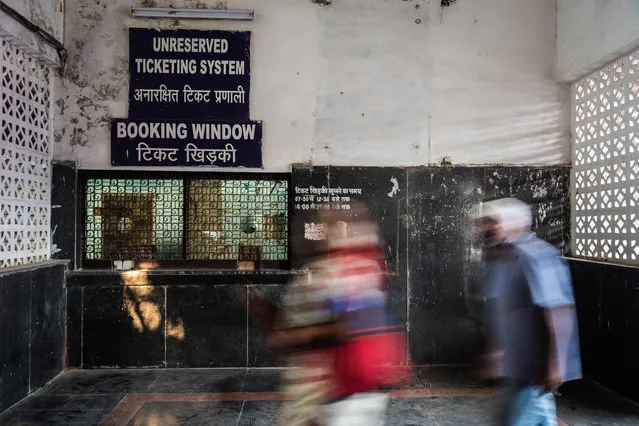
A deserted ticket booking counter in New Delhi, India, October 2017. Constructed in 1975 to bypass the crowded and passenger-heavy Old Delhi, New Delhi and Hazrat Nizamuddin railway stations, the railway line once used to be the lifeline of the capital. Over the past two decades, however, the rail network has been lying in neglect as the geographical make-up of the city changed drastically – leading to a massive drop in the number of passengers. Compared to it's much modern and younger cousin, Delhi Metro, it saw an average daily ridership of just 3,700 passengers. The 35.36km stretch connects 21 stations, including 12 halts and nine block stations but deserted locations, badly maintained platforms, encroachments, poor safety measures and lack of last-mile connectivity are keeping the passengers away. In February 2016, all the services were withdrawn and now there's just one train plying on the line. The stations have a ghostly look about them even in rush hour except for few 4-5 people waiting for the local, to take them to their offices. Hardly anyone rode these trains and the mood within is quite monotonous and stale. From observation it could also be said that the life in the local trains of the capital of India is mundane. People are generally seen dozing off or keeping to themselves. (Photo by Ankur Dutta/Barcroft Media)
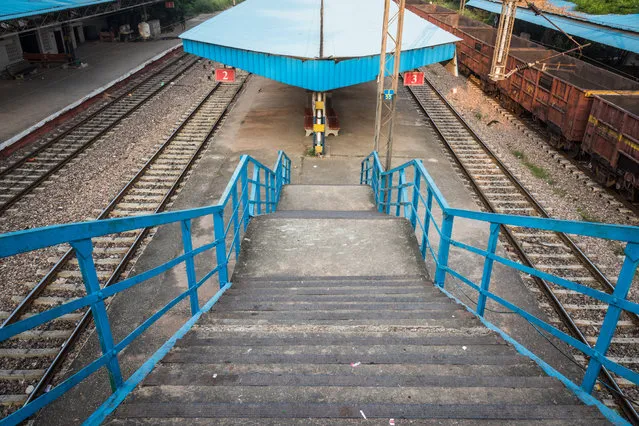
The near-empty Lajpat Nagar railway station in New Delhi, India, October 2017. (Photo by Ankur Dutta/Barcroft Media)
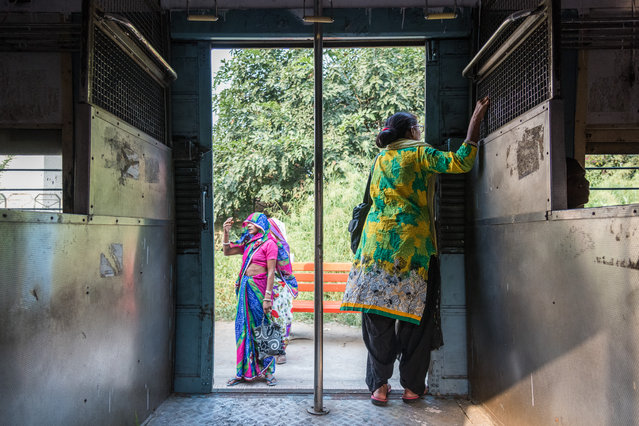
Indian passengers travel on a local train in New Delhi, India, October 2017. (Photo by Ankur Dutta/Barcroft Media)
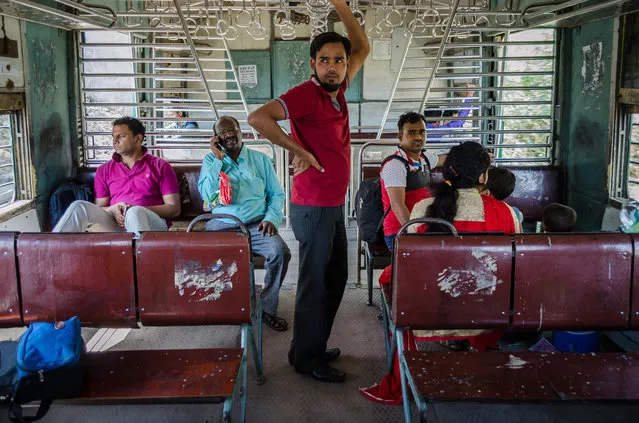
Indian passengers travel on a local train in New Delhi, India, October 2017. (Photo by Ankur Dutta/Barcroft Media)
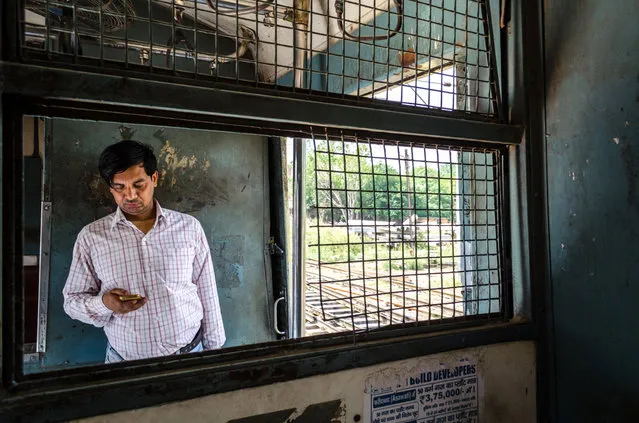
Indian passengers travel on a local train in New Delhi, India, October 2017. (Photo by Ankur Dutta/Barcroft Media)
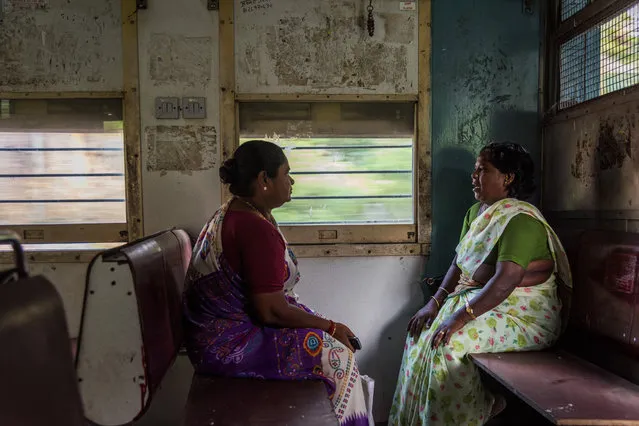
Indian passengers travel on a local train in New Delhi, India, October 2017. (Photo by Ankur Dutta/Barcroft Media)
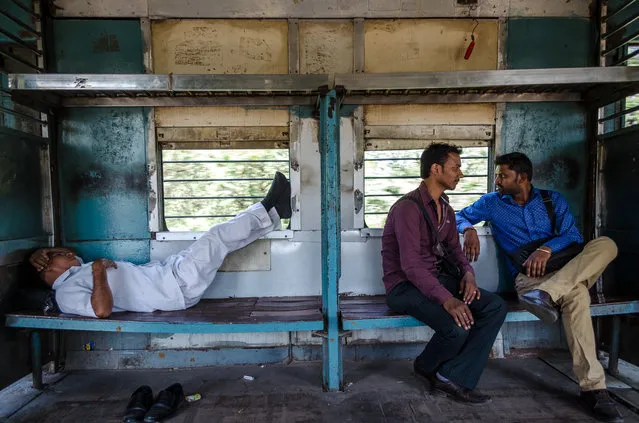
Indian passengers travel on a local train in New Delhi, India, October 2017. (Photo by Ankur Dutta/Barcroft Media)
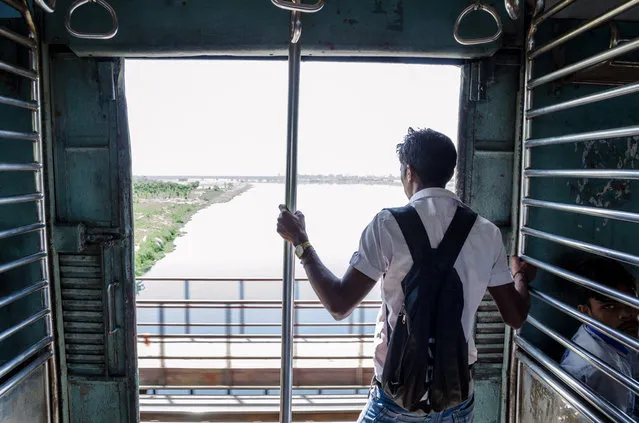
Indian passengers travel on a local train in New Delhi, India, October 2017. (Photo by Ankur Dutta/Barcroft Media)
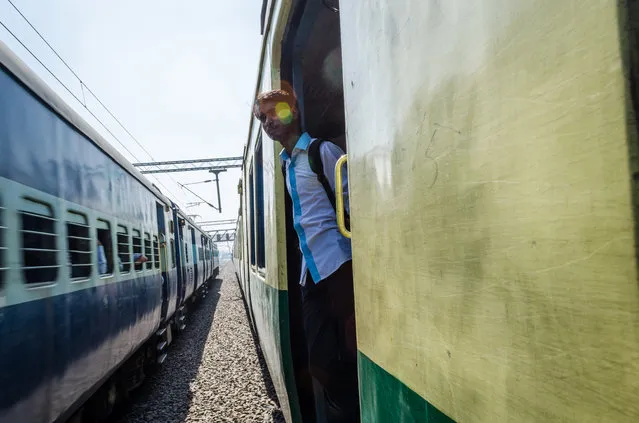
Indian passengers travel on a local train in New Delhi, India, October 2017. (Photo by Ankur Dutta/Barcroft Media)
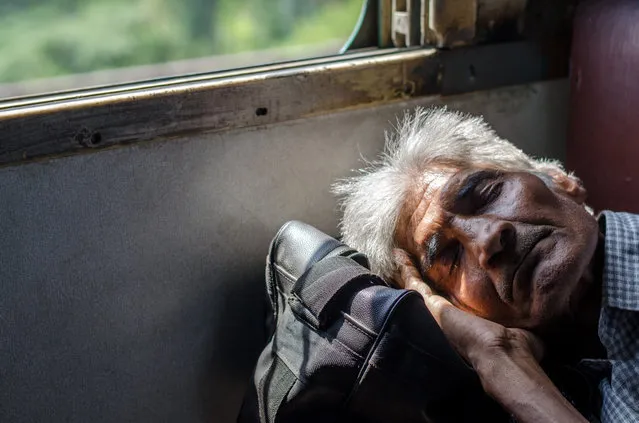
Indian passengers can be seen taking a quick nap on a local train in New Delhi, October 2017. (Photo by Ankur Dutta/Barcroft Media)
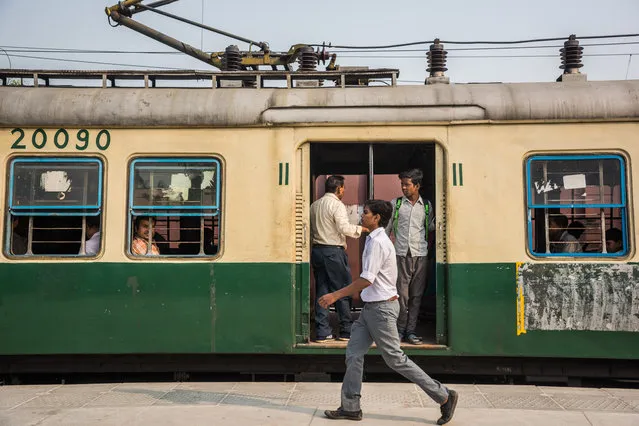
Indian passengers travel on a local train in New Delhi, India, October 2017. (Photo by Ankur Dutta/Barcroft Media)
02 Nov 2017 08:49:00,
post received
0 comments
